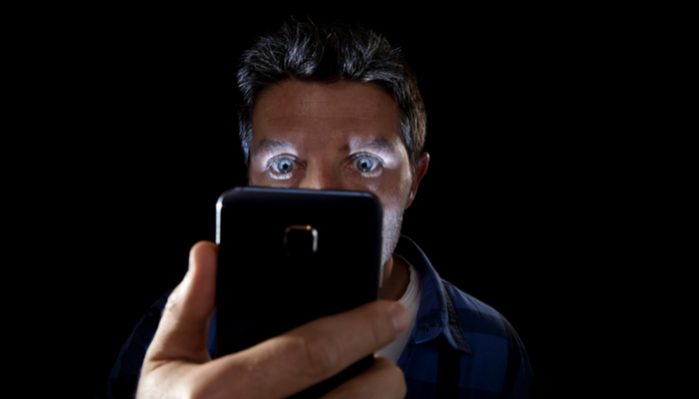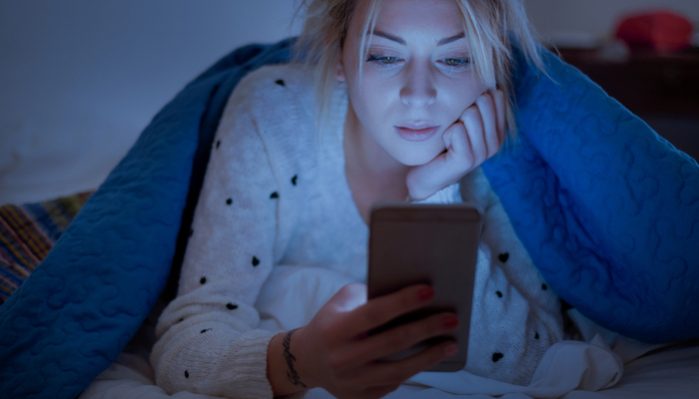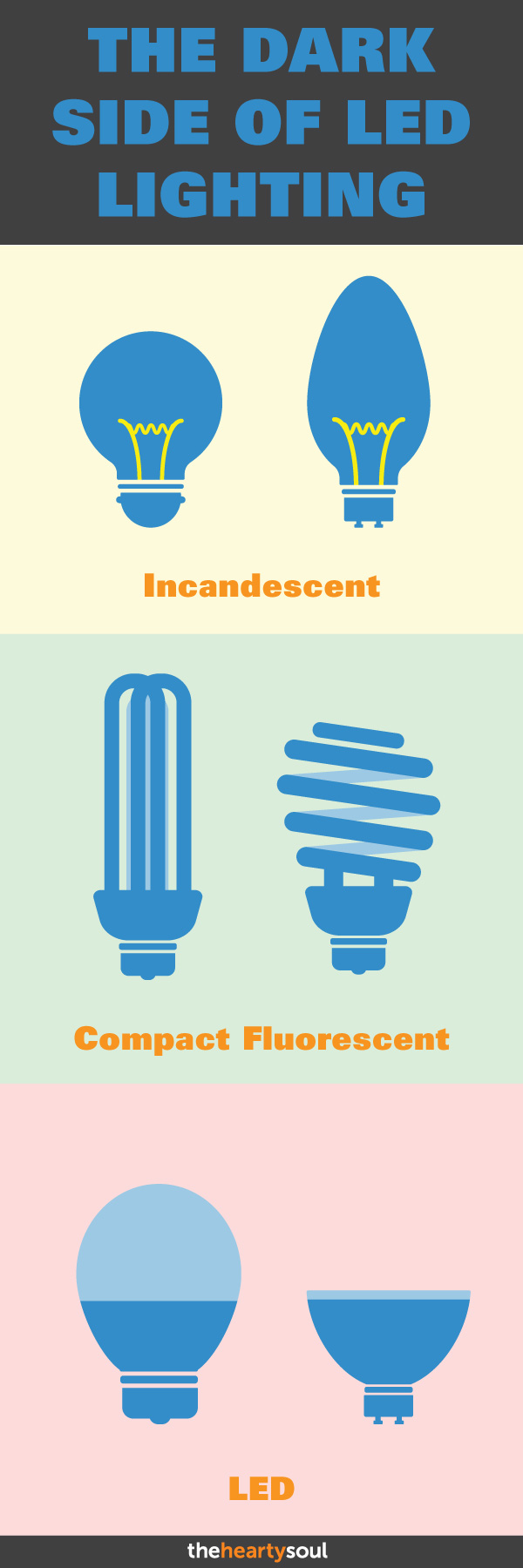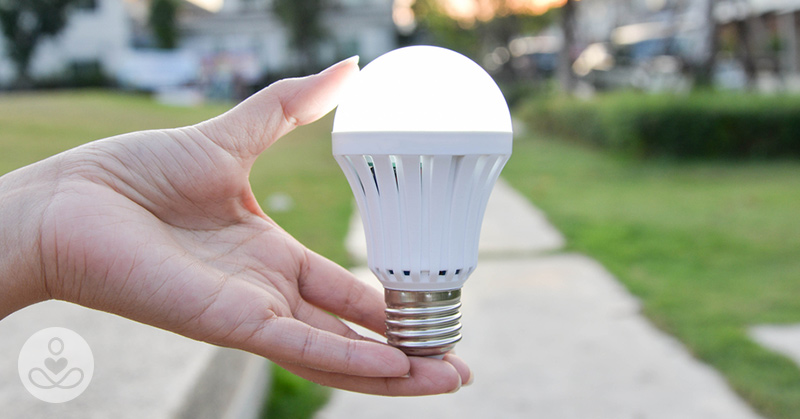Overexploitation of electricity is one of the leading causes of greenhouse gas emissions in the U.S. As a result, the world is shifting toward LED light bulbs (a more energy efficient option). This shift has decreased energy requirements by 95% in comparison to the typical incandescent light bulbs. That’s good news, right?
While this is terrific news for our planet, we can’t say the same for our health. That’s because, through the shift towards LED lighting, we have lost something known as infrared radiation which is usually generated by incandescent light bulbs. Infrared radiation is actually beneficial to your health (8)…. What?
It turns out that LED blue light can actually have some negative effects on our health. Doctors and researchers are warning about everything from street lights (12,13) to smartphones (5).
Effects of LED Lighting
According to Dr. Alexander Wunsch, a prominent expert on photobiology: infrared radiation is critical for mitochondrial and eye health. The mitochondria in our cells (throughout our bodies) is responsible for creating 90% of the energy needed to sustain life and support organ function. When mitochondria malfunction, organs start to fail – people get sick and even die.
“I call these LEDs Trojan horses because they appear so practical to us. They appear to have so many advantages. They save energy; are solid state and very robust. So we invited them into our homes. But we are not aware that they have many stealth health-robbing properties, which are harmful to your biology, harmful to your mental health, harmful to your retinal health, and also harmful to your hormonal or endocrine health.” (4)
Hidden Dangers of LED Lighting

There are many hidden dangers of LED lighting that most people have no idea exist. With changes to the way we light our homes and offices, and the number of indoor human-made sources of blue light (display screens such as smartphones, tablets, computers, and flat-screen TVs), exposure to blue light is rising. (3)
LED lights also produce a significant amount of light in the blue spectrum

Image Source: ZEISS
Blue light is high-energy, short-wavelength “aggressive” light, responsible for keeping us awake and alert. Blue has the highest energy in the visible part of the spectrum and infuses the production of oxidative stress. (4)
The biggest concern of LED’s is that they primarily emit blue wavelengths while being significantly low in counterbalancing healing and regenerative near-infrared frequencies. Lacking both red light and infrared radiation, they do not have the wavelength crucial for repair and regeneration. (3)
Excessive Blue Light Exposure

Excessive blue light exposure causes an increase in ROS (reactive oxygen species) in your tissue (10). An accumulation of ROS in cells and tissues have been implicated in numerous diseases such as diabetes, neurodegenerative disorders, and cancer, but also accelerated aging (11). These stressors need to be balanced with near-infrared that is not present in LEDs. (4)
A child’s crystalline lens is more transparent to short wavelengths – such as blue light – than that of an adult, making children more sensitive to blue light effects than adults. Over time, accumulated damage from blue light exposure can increase the likelihood and severity of age-related eyes condition such as macular degeneration and cataracts. (3)
Blue Light At Night

Harvard researchers have linked exposure to blue light at night to some types of cancer, diabetes, heart disease, obesity and an increased risk for depression. It is known that exposure to light suppresses the secretion of melatonin and lower melatonin levels might explain the association between these types of health problems. (5)
The effects of blue light on the sleep cycle can be minimized by: (6, 4)
- Avoiding bright screens for 2-3 hours before bedtime.
- Seeking some outdoor light exposure in the early hours of the day.
- Limiting screen time for children.
- Getting an abundant amount of natural light during the day, as this will increase your ability to sleep at night.
Blue Light Exposure Tips
So, what are you supposed to do if blue light has harmful side effects, and yet not opting for them can further harm the planet? (4)
1. Start by using dim red lights for night lights, which have the least power to alter circadian rhythm and suppress melatonin. (4)
2. Utilize natural light in the day (the sun)
3. If you work at night or have a lifestyle that involves the use of electronic devices in the evening, then maybe opt for wearing blue-blocking gasses, or even obtaining an app that filters the blue/green wavelength at night.
4. A healthy diet high in leafy green vegetables and fruits may help to increase the levels of the protective pigments in the retina and mitigate some damaging effects of blue light. (3)
5. When buying LED bulbs, look for a CRI of 97, which is the closest they come to natural light. (8)
Final Note
Although LED lighting is a better alternative for our planet, chronic exposure to blue light can be detrimental. Luckily, the eye health industry has responded to this matter by creating filters and apps that filter the blue light from screens at appropriate times, without affecting visibility. Moreover, some lens manufacturers have developed special glare-reducing lenses and coatings to block high energy visible blue light. (3)

Sources
- (1) 31-Mar-2015 by BETTER VISION Sunglasses, ZEISS News, Spectacle Lenses, Prevention Your Individualized ZEISS lens. (n.d.). Blue Light: The Good and the Bad. Retrieved from https://www.zeiss.ca/vision-care/en_ca/better-vision/understanding-vision/eye-and-vision/blue-light-the-good-and-the-bad.html
- (2) E. (n.d.). Are LED Lights Bad for Your Health? Retrieved from https://www.engineering.com/ElectronicsDesign/ElectronicsDesignArticles/ArticleID/14607/Are-LED-Lights-Bad-for-Your-Health.aspx
- (3) Blue Light – Is there risk of harm? (2017, November 13). Retrieved from https://opto.ca/health-library/blue-light-is-there-risk-of-harm
- (5) Harvard Health Publishing. (n.d.). Blue light has a dark side – Harvard Health. Retrieved from https://www.health.harvard.edu/staying-healthy/blue-light-has-a-dark-side
- (6) Optical Prism. (2018, February 01). The dark side of blue light: A Q&A with CAO. Retrieved from https://opticalprism.ca/the-dark-side-of-blue-light-a-qa-with-cao/
- (7) Shine the light on blue light. (n.d.). Retrieved from https://www.bluelightexposed.com/#blue-light-and-macular-degeneration
- (10) Mamalis, A., Garcha, M., & Jagdeo, J. (2015, February). Light Emitting Diode-Generated Blue Light Modulates Fibrosis Characteristics: Fibroblast Proliferation, Migration Speed, and Reactive Oxygen Species Generation. Retrieved from https://www.ncbi.nlm.nih.gov/pmc/articles/PMC4990457/
- (11) Ray, P. D., Huang, B., & Tsuji, Y. (2012, May). Reactive oxygen species (ROS) homeostasis and redox regulation in cellular signaling. Retrieved from https://www.ncbi.nlm.nih.gov/pmc/articles/PMC3454471/
- (12) CNN. Doctors issue warning about LED streetlights. https://www.cnn.com/2016/06/21/health/led-streetlights-ama/
- (13) James P et al. Outdoor Light at Night and Breast Cancer Incidence in the Nurses’ Health Study II. https://ehp.niehs.nih.gov/ehp935/
